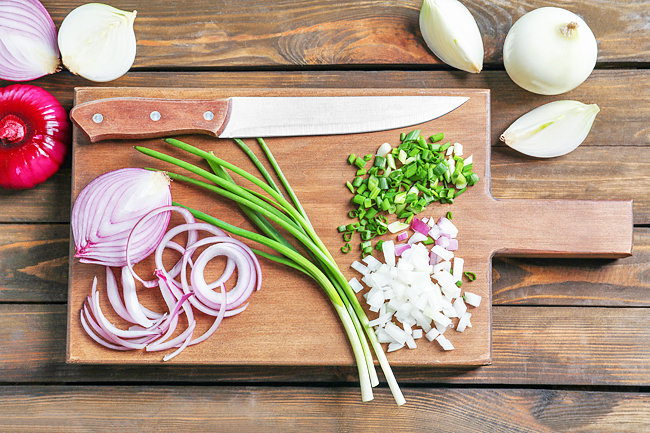THE WASHINGTON POST – Each Wednesday, Aaron Hutcherson and Becky Krystal answer questions and provide practical cooking advice in a chat with readers at washingtonpost.com/community. Aaron and Becky write and test recipes for Voraciously, The Washington Post’s team dedicated to helping you cook with confidence. Here are edited excerpts from a recent chat.
Q: I never buy shallots or scallions because they cost more and a smaller amount of a mild onion works just as well in most recipes, right? Or not? If you convince me that shallots and scallions are worth it, what’s the best way to keep them so they don’t go bad before they’re used up?
A: I think a mild onion is a great swap for shallots and white and light green scallion parts that are cooked. Scallions are a little more unique in their texture and slightly grassy, herbal flavour, especially as a garnish. I would not want a pile of raw onion where, say, dark scallion greens are called for.
A: For shallots, store them the same way as you store onions, in a cool, dry, dark spot (ideally not the fridge). For scallions, I wrap them in a slightly dampened towel and keep them in the fridge, or you can put them in a glass with an inch or two of water.
Q: Can I substitute buttermilk for milk in, for example, my pancake recipe, without any adjustments?
A: Without seeing it, hard to say, but in theory, I think not. Buttermilk is more acidic than milk, so typically you need baking soda to neutralise that somewhat and generate rise.
It can be done, though. If you use buttermilk, you’ll probably want to replace the baking powder (presumably) with baking soda, except not in a one-for-one amount. Baking soda is used in smaller amounts, as it’s more potent thanks to being a pure leavener, while baking powder has other ingredients. You can leaven one cup of flour with quarter teaspoon baking soda or one to one-quarter teaspoons baking powder.

Q: I bought a container of miso, but I don’t know where to start. Can you suggest some recipes (other than salad dressing) to ease into cooking with miso?
A: In addition to salad dressings, you can add it to soups, stews, braises, pastas and even bake with it.
Q: I just got a huge head of cauliflower from a farmers market, and it came with its leaves intact. If I were to make cream of cauliflower soup, would the leaves be a good addition or would their flavour/fibrousness be undesirable? Also, I have a lot of bean broth left over from cooking a pound of Great Northern whites, would that broth go well in a cauliflower soup, do you think?
A: If you’re going to puree the soup, sure, go ahead and add them! I’m also a big fan of roasting cauliflower leaves as you would something like kale chips.
Toss with salt and olive oil and roast at a fairly high temperature, at least 400 degrees, until crisp. And, yes, bean broth makes a wonderful addition to soup. Lots of flavour!
Q: I love fish and seafood, and I’m pretty good at cooking fish, on the stove or in the oven. But I seem to overcook shrimp and scallops, so I’ve been avoiding them. Is there a way to know when they are done?
A: For shrimp, you want to cook them just until they turn pink, which happens very quickly. Even for larger shrimp, and depending on the heat of the skillet, you only need a minute or two per side. So you just need to have a very watchful eye and move quickly to get them in and out of the pan. For scallops, finding the freshest, untreated, dry-packed scallops is key. Some people cook scallops mostly on one side to keep from overcooking them.
Q: I thawed some frozen turkey deli meat in the fridge. Is it safe to refreeze some of the slices?
A: Yes, as long as it was thawed in the fridge, as you said, and that its time in the fridge did not exceed the recommended storage time (three to five days). – Becky Krystal & Aaron Hutcherson






